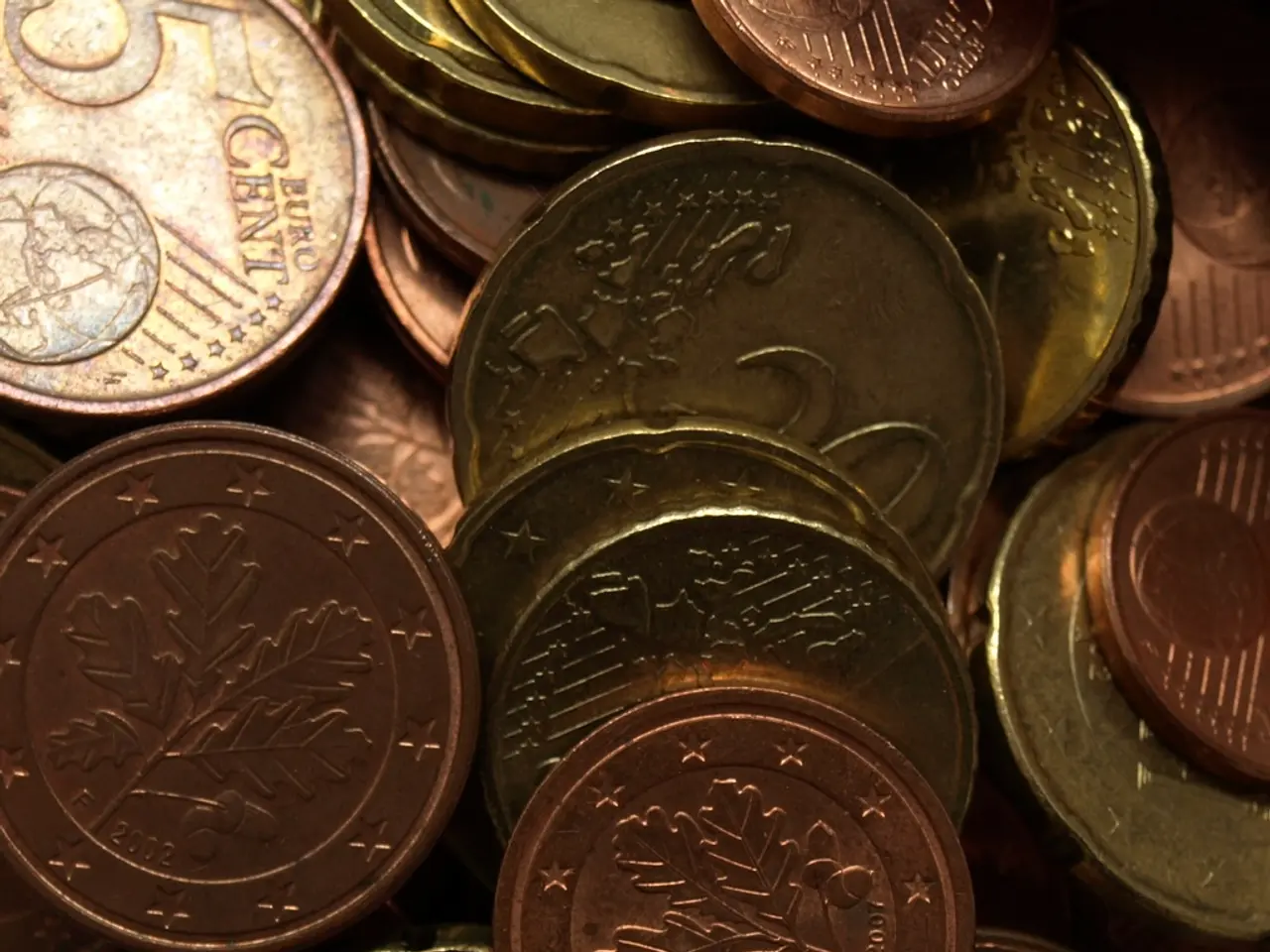Approximately 300 million five hundred euro banknotes continue to be in active use
The 500-euro note, despite being phased out by the European Central Bank (ECB) due to its association with illegal activities such as money laundering and terrorist financing, remains in circulation [1][5]. This is because the ECB has not recalled or invalidated the existing notes, allowing them to continue being used as legal tender.
The continued existence of the 500-euro note has several implications:
- Ongoing legal tender status: Holders can still use or exchange these notes at banks or the ECB indefinitely [1].
- Limited acceptance in shops: Some retailers may refuse them due to familiarity or policy, despite their legality [5].
- Potential collectible value: As the note is phased out, older series notes may gain appeal to collectors [3].
- Impact on cash demand: Despite the phase-out of the 500-euro note, demand for euro cash overall continues to grow, reflecting Europeans’ preference for cash as a payment method and store of value [2].
- No production means gradual disappearance: Without new issuance, the notes will slowly leave circulation through natural attrition or returns to banks [1].
FDP politician Markus Herbrand does not see a significant trend towards exchanging 500-Euro notes for other banknotes. As of the latest report, there are 300.3 million 500-Euro notes still in circulation, worth 150.2 billion Euros [2]. By December 31, 2019, the number of 500-Euro notes had decreased to 319.3 million notes worth 159.6 billion Euros [2].
Herbrand suggests that the federal government's efforts to reduce the circulation of 500-Euro notes have been insufficient so far, and if they want to speed up the process, they need to pay more attention to the issue [4]. The Bundesbank estimates that 25 to 35 percent of the 500-Euro notes are stored in safes for value retention [1][6].
Experts have expressed doubts about the effectiveness of the decision to abolish the 500-Euro note, with some questioning whether it will significantly impact illegal activities [7]. Despite these concerns, the ECB's decision to phase out the 500-euro note represents a commitment to combating money laundering, terrorist financing, and other illicit activities.
[1] European Central Bank. (2021). 500 euro banknote. Retrieved from https://www.ecb.europa.eu/money/banknotes/banknotes/html/index.en.html
[2] Bundesbank. (2021). Statistical data wizard. Retrieved from https://www.bundesbank.de/statistik/statistische-datenwelt/gesamtkonzern/geldumlauf/gesamtgeldumlauf-banknoten-euro/gesamtgeldumlauf-banknoten-euro.html
[3] Numismatics International. (2021). The 500 euro banknote. Retrieved from https://numismatics.international/european-euro/500-euro-banknote/
[4] Handelsblatt. (2021). Markus Herbrand: Die 500-Euro-Note bleibt lange Zeit im Umlauf. Retrieved from https://www.handelsblatt.com/politik/deutschland/markus-herbrand-die-500-euro-note-bleibt-lange-zeit-im-umlauf-10335200.html
[5] Deutsche Welle. (2021). Why the 500-euro banknote is still in circulation. Retrieved from https://www.dw.com/en/why-the-500-euro-banknote-is-still-in-circulation/a-57534836
[6] Bundesbank. (2021). Statistical data wizard. Retrieved from https://www.bundesbank.de/statistik/statistische-datenwelt/gesamtkonzern/geldumlauf/gesamtgeldumlauf-banknoten-euro/gesamtgeldumlauf-banknoten-euro.html
[7] Reuters. (2021). Experts doubt effectiveness of 500 euro banknote ban. Retrieved from https://www.reuters.com/article/us-europe-ecb-banknote-idUSKBN27K28O
- The ongoing circulation of 500-euro notes, despite efforts to reduce their usage, suggests a need for increased attention from the federal government in the finance sector, as evidenced by the suggestion made by FDP politician Markus Herbrand.
- The continued existence of the 500-euro note can potentially provide an opportunity for businesses, as older series notes may gain value due to their appeal to collectors, according to Numismatics International.




